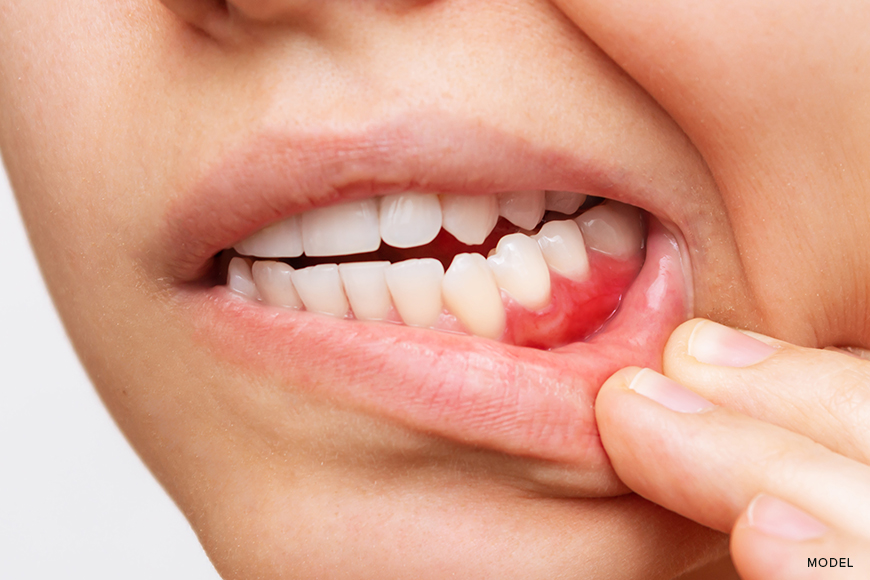Gum disease epitomizes a bacterial contagion affecting the oral tissues encasing the teeth, encompassing the gums, ligaments, and osseous structures. Its inception typically traces back to plaque accumulation, a tacky bacterial film coating the teeth. If left unscathed by regular brushing and flossing, plaque transmutes into tartar, preventing this through check ups. Over time, the bacterial entities within plaque and tartar spur gum inflammation and infection, thereby fostering gum disease.
Roots of Gum Disease
Numerous elements contribute to gum disease emergence. Principal among these is inadequate oral hygiene, permitting plaque accrual and tartar solidification. Additional risk factors entail:
- Tobacco usage: A significant catalyst for gum disease, impeding therapeutic endeavors.
- Diabetes: Individuals with diabetes harbor heightened susceptibility to gum disease due to immunocompromised states.
- Endocrine fluctuations: Hormonal variances during gestation and menopause exacerbate gum disease susceptibility.
- Hereditary influences: Certain individuals may inherit a genetic predisposition to gum disease.
- Stress: Prolonged stress compromises immune functions, rendering gums more susceptible to infection.
- Dental misalignment: Malposed teeth facilitate bacterial reservoirs, nurturing gum disease.
- Pharmacological agents: Specific medications provoke xerostomia, diminishing saliva flow and augmenting gum disease risk.
- Immunocompromised status: Ailments undermining immune functions, such as HIV/AIDS, amplify gum disease vulnerability.
Gum Disease Indications
Discerning gum disease manifestations proves pivotal for timely intervention and resolution. Prominent indicators encompass:
- Crimson, inflamed, or sensitive gums
- Hemorrhagic gums, particularly during dental hygiene rituals
- Gingival recession, elongating tooth appearance
- Persistent halitosis or disagreeable oral taste
- Lax or mobile teeth
- Occlusal alterations upon mandibular closure
- Interdental pus formation
- Dental prosthetic misfit
Encountering any of these signs mandates prompt dental scrutiny for accurate diagnosis and intervention.
Therapeutic Approaches for Gum Disease
Therapeutic modalities for gum disease hinge upon condition severity. In its incipient stages, termed gingivitis, professional dental cleanings and enhanced oral hygiene suffice for malady reversal. However, advanced periodontitis necessitates more aggressive interventions. Common therapeutic avenues include:
- Subgingival scaling and root planing: A profound cleansing procedure targeting subgingival plaque and tartar, alongside root surface smoothening to impede bacterial adherence.
- Antibacterial agents: In select cases, antimicrobials combat bacterial proliferation and inflammation attenuation.
- Periodontal surgery: Advanced gum disease may mandate surgical debridement, gingival contouring, or osseous regeneration.
- Dental implantation: Instances of tooth forfeiture due to gum disease may be redressed via dental prosthetic integration.
It’s imperative to acknowledge gum disease as a chronic entity mandating sustained vigilance and periodic dental visits to forestall relapse.
When to Consult a Dentist?
If you suspect you have gum disease or experience any of the symptoms mentioned earlier, it is crucial to seek professional dental care. A dentist will evaluate your oral health, diagnose the condition, and recommend appropriate treatment options. Early intervention is key to preventing further damage and preserving your oral health.
At Madison Dentistry & Implant Center, our experienced team of dentists specializes in the diagnosis and treatment of gum disease. We offer personalized treatment plans tailored to each patient’s unique needs. Don’t let gum disease compromise your oral health. Schedule a consultation with our experts today.




